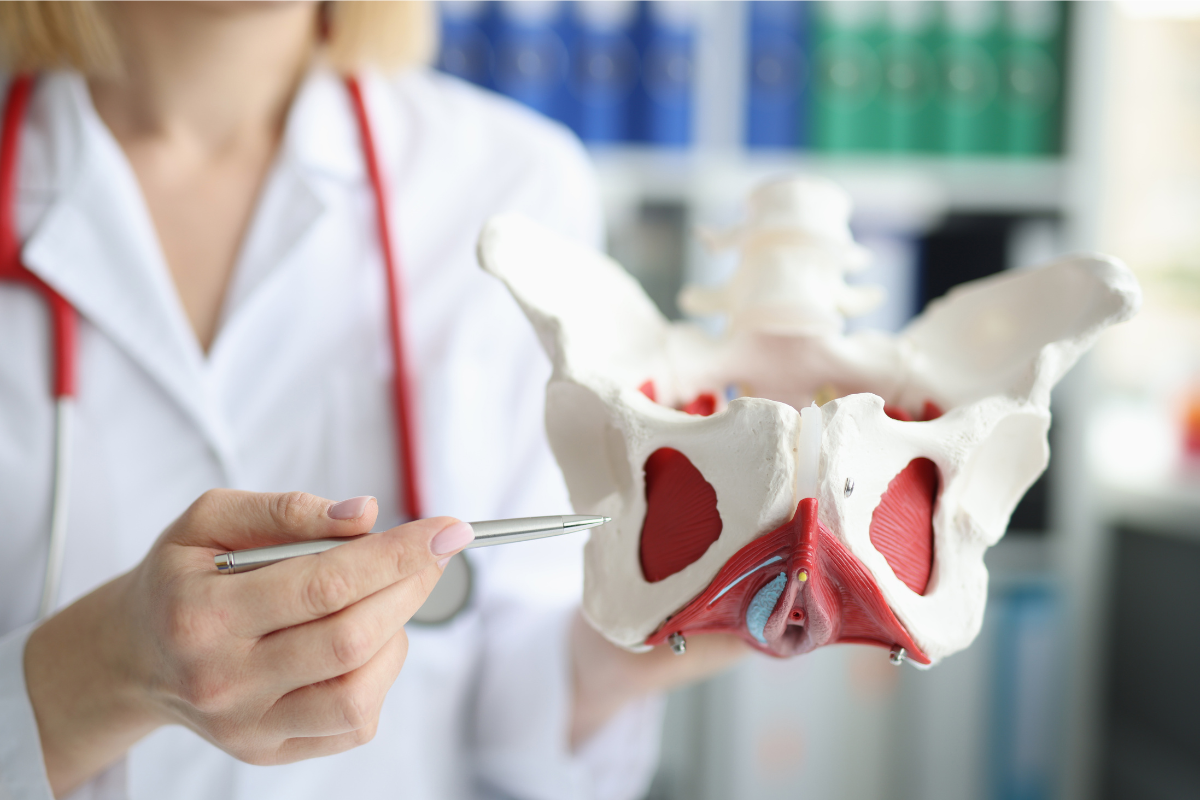Always Gotta Go? Get Control Over Urinary Urgency

Do you always know where the public bathrooms are? Are you the friend who always asks to make a pit stop? Is it impossible to sit through a movie? Whether it’s a lifelong experience or a recent development, frequent and urgent urination are a big part of life for many midlife women.
The “normal” frequency of voiding is once every two to four hours, and no more than one time at night. You should also be able to defer urinary urge when it’s not a good time to go.
Urinary frequency is when someone empties their bladder more frequently than normal. Most people don’t notice it until it becomes a problem for their daily life, like interrupting meetings or making it hard to commute to work.
Urinary urgency often accompanies frequency, but can also occur with a normal bladder schedule. People experiencing urinary urgency are struck by strong and sudden urinary urge that they can’t defer, and find themselves rushing to the bathroom.
Urinary urgency and frequency are common across the population, and are usually driven by a combination of behavioral and dietary habits. Addressing these lifestyle factors is critical for peri- and postmenopausal women. However, hormonal changes around menopause can also have a large influence on your symptoms.
If you experience urinary urgency along with leaking, make sure to read this article about treating urinary urge incontinence.
The Influence of Menopause
Declining estrogen in menopause significantly influences urinary urgency and frequency, and many women experience urgency for the first time after menopause.
Besides vaginal dryness and painful sex, the other major symptoms of genitourinary syndrome of menopause (GSM) are urinary urgency and recurrent urinary tract infections (UTIs). Read more about GSM in the article attached below.
Tissue Changes Contribute to Urinary Urgency
After menopause, the tissues around the vaginal opening, lining of the urethra and inside of the bladder become more irritable and sensitive. This shift can make you feel like you have to empty more frequently and more urgently.
Urinary Tract Infections (UTIs)
Decreasing estrogen levels also change the balance in the vaginal microbiome (the bacteria, yeast and more that live naturally on our body). The environment that normally keeps bacteria at healthy levels becomes unbalanced, so the bacterial overgrowth that causes UTIs is more likely to occur.
No matter your age, one UTI—much less multiple—can be an upsetting experience. After experiencing UTI, many women begin to empty their bladder more frequently than normal to try to avoid another UTI. They also may become more concerned about their bladder sensations, which reinforces patterns of frequency and heightens urgency.
How to Take Back Control
Train your bladder
At the end of the day, getting control over bladder urgency and frequency is about consciously and consistently choosing when you go. You want to show your bladder what you want your normal schedule to be, instead of letting yourself be taken along for the ride.
The goal is to teach your body to go every two to four hours and be able to defer urinary urge until it’s convenient to find a bathroom.
Make sure you empty your bladder at least every four hours, even if you don’t feel the need to. This practice can reduce the risk of UTIs and prevent intense urgency from holding for many hours.
Bladder training is based on incrementally lengthening the intervals between bathroom trips. Start by tracking how frequently you empty your bladder on a typical day.
Let’s say that you urinate once per hour (a high frequency):
- Set a timer for 75 minutes, and only go when the timer goes off. If you don’t need to go at the end of the interval, go anyway.
- If it feels like you’re working hard to defer urge at the end of this interval, use urge deferral techniques like distraction, quick Kegels or paced breathing to help you wait longer.
- If you can’t defer your urge, calmly go to the bathroom. Then, get back on the bladder training schedule.
- If this interval feels easy to stick to, increase it by another 15-20 minutes.
- Repeat this process and increase the interval by about 20 minutes each time when you are successful for a day or two.
- You can relax the rules once you can regularly wait two to four hours between bathroom trips. You should also be able to confidently defer bladder urge if needed (in a meeting, not near a toilet, etc.). Even if your interval is “normal,” you may benefit from continued timed voiding and practice of urge deferral if you have urge urinary incontinence.
Get enough water and avoid bladder irritants
Make sure to read this article on the best dietary practices for bladder health.
Prevent UTIs
Preventing UTIs—and avoiding frequent antibiotic use—is a critical piece of the puzzle for many women.
Start with the basics:
- Drink enough water (at least 2.5L per day)
- Always wipe from front to back after going to the toilet
- Avoid baths
- Urinate after sex
- Wear breathable underwear and clothes
- Do not use douches or soaps directly on the vulva—this can further irritate tissues and lower your body’s natural defenses against infection
- Urinate every 4 hours (don’t “hold it”).
If you experience more than three UTIs a year, it’s time to take more action.
- Local estrogen products are a gold standard treatment for urinary urgency and recurrent UTIs associated with GSM. They treat the root cause, instead of the symptom.
- D-mannose is an over-the-counter product that has been shown to reduce the risk of UTIs. Take 2g dissolved in water daily for prevention.
Products like probiotics, cranberry and vitamin C are widely used for UTI prevention, but there isn’t evidence to support their efficacy. You read that right—cranberry is no better than placebo for preventing or treating UTIs.
Sign up for more unique women’s health content
By submitting this form, you agree to the Lisa Health Privacy Policy and Terms of Use


